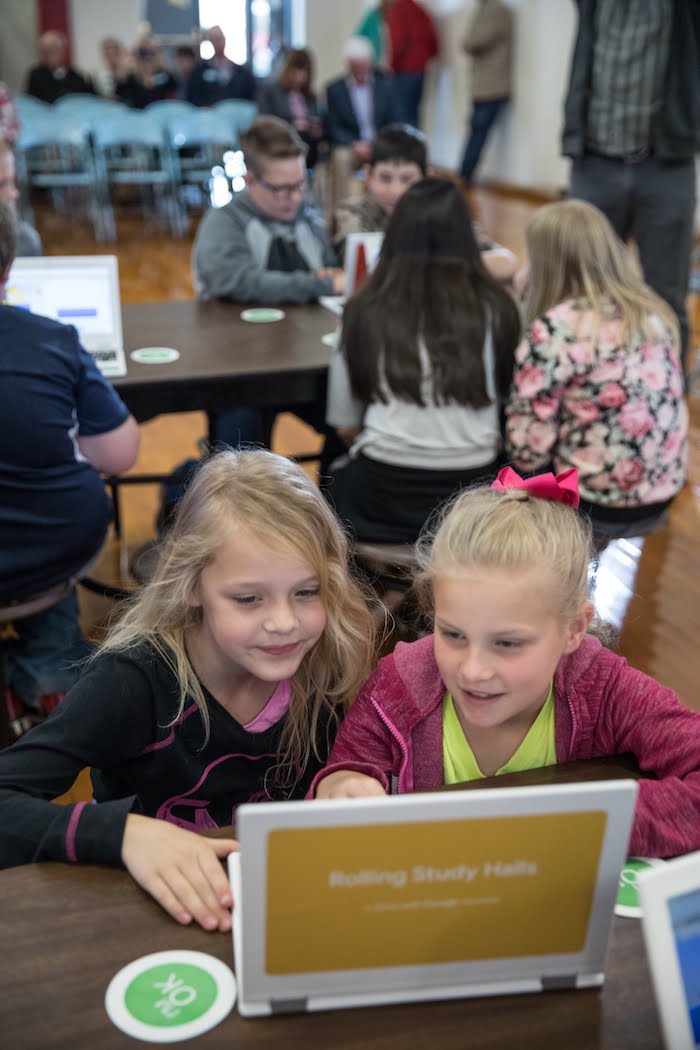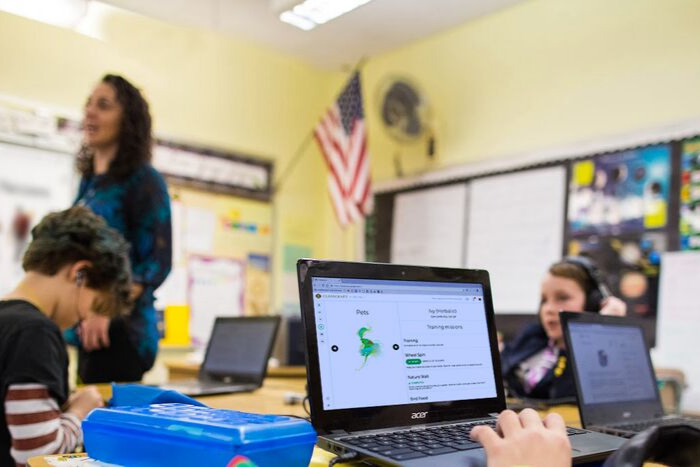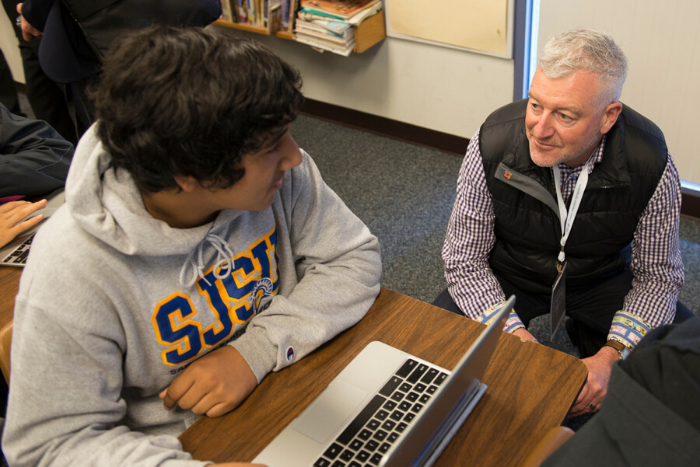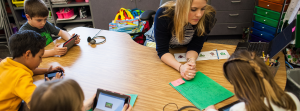Classroom teachers and other specialists seem to be on a constant search to find creative ways to teach diverse learners. This label is a catchall assigned to many different types of students because of their culture or race, religion, academic ability, native language, or socioeconomic status, among other considerations.
In general, the term represents one who differs from the majority of students in some way when it comes to their education.
The law protects many of the groups mentioned above when it comes to the type of education they should receive. According to the Elementary and Secondary Education Act (ESEA), meeting the needs of diverse learners is a responsibility, not a bonus. Many teachers have committed to making sure that all students receive an equal and adequate education. But it’s figuring out how to provide this that’s the tricky part.
This article is a compilation of many tried-and-true, research-based, and teacher-approved techniques that can make figuring out how to teach to diverse learners a lot easier.
7 things you can do to teach diverse learners

1. Make an IEP cheat sheet
Individualized education plans (IEP) are lengthy, detailed documents. Even if you start the year gung-ho and read every IEP plan delivered to you, it’s highly unlikely that you’ll memorize and retain every single accommodation required.
To save yourself the time of having to go back and read the plans repeatedly — or worse, forgetting to provide what the law requires — you should take some time to make an IEP cheat sheet. Doing so will allow you to store reminders about important special education for a student on a single page. The benefit? Fewer headaches for you and a greater understanding of ways to reach and teach diverse learners.

2. Encourage active learning
Most educators have created at least one lesson where they thought, “This is great — I can’t wait to teach this!” Then, they took it into the classroom, and the kids either didn’t get it or wouldn’t participate. This demonstrates a teaching fact that should be shared with all newbies: A good lesson written to state standards isn’t good enough.
It can be challenging to keep students engaged and actively involved. This is especially true for students who struggle with learning, speak English as a second language, or have trouble focusing. The solution? Incorporate active learning strategies. Michigan State University’s Office of Medical Education Research and Development suggests the following as a way to teach diverse learners:
- Group learning
- Case-based learning
- Group discussions and talk-and-turns
- One-minute papers and one-sentence summaries
- Demonstrations and memory matrixes
The “muddiest point” is a personal favorite of mine; it hat asks students to write notes on the most unclear or most confusing part of a lesson, assignment, or project. Then, you address these issues with students.

3. Embrace small group and learning stations
I will never forget the first year I taught fourth grade as a self-contained instructor. I had been teaching third grade at that particular school for a couple of years and decided to move up a grade to teach with two of my favorite co-workers. When I found out they liked to teach math in small groups, I instantly thought that the move was a mistake. You should teach math to the whole class at once, I thought. That’s the way we learned it, wasn’t it? Thankfully, I was wrong.
Here’s how this might look in a classroom:
I split my class of 20 into five mixed-ability groups. Students also sat in these groups daily since the desk layout was also in groups of four. Every day during math, I would do a whole-class introductory lesson that served as a lead-in for what we would learn. This covered the basics. Then, students would look at the whiteboard and determine where their group was to start on the center rotation. My setup included:
- Teacher Table: Daily Lesson (I taught this to each group).
- Table 2: Math Facts in a Flash (handheld games/tablets practicing math facts).
- Table 3: Review Roundup (worksheets/games that review concepts students already understood).
- Table 4: Dice and Card Center (you can find tons of these activities on Teachers Pay Teachers).
- Table 5: Create a Test/Writing Prompt/Journaling (activities vary, but create a test requires students to pull a topic such as addition, subtraction, etc. and then create math problems and an accompanying answer sheet).
Students rotated tables clockwise at my signal (with a timer, of course) until everyone had been to the teacher table. The results were amazing! All students, including my diverse learners, understood the material better.
Now, I’m not suggesting that you have to divide your class into small groups for every lesson (although you certainly can). You should consider including centers and small group activities into your weekly routine in some way because it:
- Helps all learners, especially diverse learners, by addressing knowledge gaps
- Promotes collaboration and communication among students
- Gives you more opportunities for feedback
- Encourages independent learning
The University of New South Wales Sydney provides some suggestions and guidelines for effective small-group teaching.

4. Group by learning style, not ability
In my experience, grouping by ability is counterproductive. It can make things a little easier at the teacher table, but research is clear that in general, it keeps struggling students where they are and does little to boost students of intermediate aptitude to higher levels.
So, how should we group students? I’ve found that using mixed-ability groups can promote learning, especially when students get the opportunity to coach or teach their peers’ An extension of this is to place students who learn in similar ways together — visual learners with visual learners, auditory with auditory, etc. Doing so can make a huge difference during small-group instruction.
Here’s a personal example:
Ms. Dean has a group of four students who are hands-on learners and have varied math abilities. One student is advanced, one is at baseline level, and two struggle with math. In general, all four shine during inquiry-based activities and project-based learning opportunities but dislike paper-and-pencil activities. One of the students is an ESL student. One has ADHD.
By grouping them together, Ms. Dean is able to create a differentiated instructional plan and use hands-on manipulatives to allow the students to demonstrate their skills. She finds that doing so is one of the most effective and creative ways to teach diverse learners.

5. Promote project-based learning
While you are differentiating your teaching, consider project-based learning (PBL). But first, a disclaimer: You can not assign a poster project on Friday, send it home with students, and call it project-based learning.
Project-based learning is not a summative assessment; it is a way of actually helping students understand what is being taught through hands-on methods. During PBL activities, kids work together to solve real-world problems by coming up with solutions together. Although glue and poster boards are sometimes involved, the real ingredients of project-based learning activities used to teach diverse learners are:
- The academic content itself (the topic you’re teaching)
- Real-world scenarios that make the material more relevant
- A sense of purpose (end goal)
- Opportunities to practice collaboration
- 21st-century skills
- Student-focused activities with ample choice
- Opportunities for self-reflection
Examples of PBL activities include this example:
A history teacher is looking for a way to help his students better understand the impact that legislature and the Trail of Tears had on Native American communities. Instead of having them read a passage or do a traditional research project, she assigns them to small groups.
Then, she asks them to come up with a better way the government could have continued on with U.S. expansion without negatively affecting the populations that had lived in the U.S. for thousands of years before European settlers arrived.
Because he wanted students to have a choice in their learning, the teacher made the project open-ended. This permitted students to present their plan any way they wanted to. Some suggestions included a skit, papers, or visual presentations.

6. Incorporate ed-tech and adaptive learning tools
Another suggestion for finding creative ways to teach students is to incorporate ed-tech and adaptive learning tools. There’s plenty of technology out there designed with certain types of students in mind; there’s no need to reinvent the wheel. Instead, try incorporating these tools:
- Peardeck presentations like the Newsela Daily Deck, designed to make news articles interactive
- Plickers, free card activities for formative assessment
- Wordsinasentence.com to help students understand vocabulary in context
- Classcraft for game-based classroom management options, like topic review framed as Boss Battles
- Book Creator as an alternative assessment
- Google Keep for electronic note-taking and organization

7. Provide alternative testing options
One final suggestion is to find alternative testing avenues for individual learners (if allowed) or the class as a whole. The fact that we traditionally test on paper doesn’t mean that it’s the only acceptable way. Instead, you should differentiate your approach by allowing students to answer orally, through drawings (pictures), and with the use of their notes.
Doing a quick Google search for “alternative assessments” will bring up tons of creative testing ideas for every type of student. This will allow you to evaluate your students better and improve your own teaching.
Photo: Google Edu
Personalized Learning


